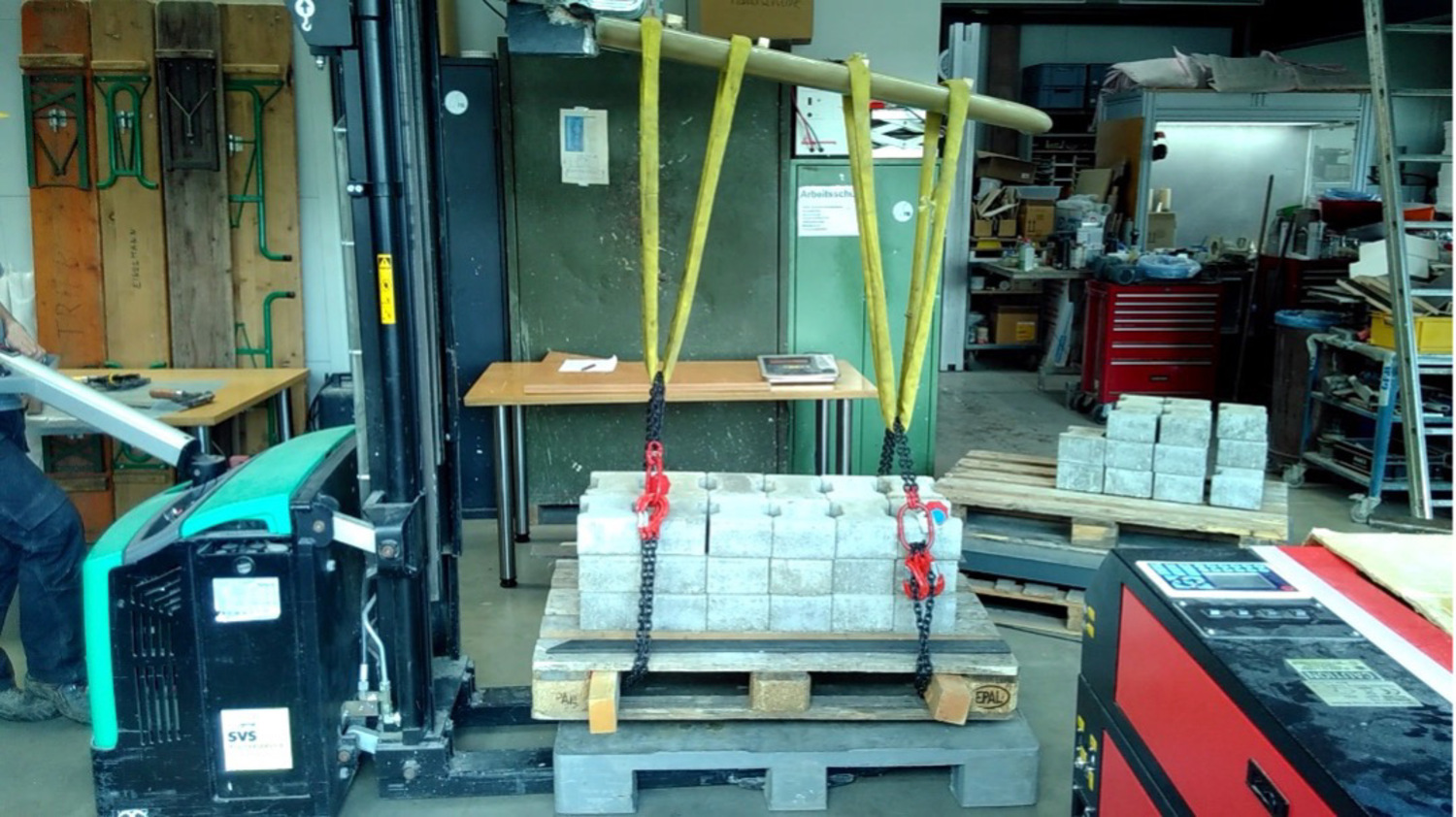Published: 25.09.2021 by Florian Mock
Let’s see if we can still do it
After a long time, a more complicated piece of fibre-reinforced plastic construction was once again produced in the FVA workshop.
Some time ago, it was envisaged within the FVA 30 to start manufacturing the first elements of our aircraft in winter 2021/22. For many reasons, it was agreed to start with the wings. As a result, the question arose as to whether we could do this so easily at all, or whether the skills within the FVA regarding the production of a flying part in GRP/CFRP construction did not need to be refreshed a little. It quickly became clear that the latter would make sense. Fortunately, an old mould for a wing tip could still be fished out of the almost unfathomable depths of our storage containers. It was no longer flawless, but at least it had been taut in itself for the undefined period of its storage, so that it could not warp. This made it more than suitable for our purposes and, after a few minor touch-ups, it shone almost like new again. And so Johannes “Nupsi” Geerling and Niklas Krampe drew up a plan of how to go about making such a wing tip.
Based on this shape, Niklas and Nupsi managed to find out the necessary dimensions and geometries for the built-in parts such as spar and ribs and to build the corresponding moulds for them as well. Fortunately, a wing consists of more than just the shell visible from the outside; inside, a continuous spar and reinforcing ribs give it the necessary stiffness to withstand and conduct forces and moments from different directions.
After these preparations, the production team, consisting of Niklas, Nupsi, Eva “Theki” Schnierle, Felix “Alf” Diekmann, Linus Baur and Florian “Flock” Mock, could hardly wait to get started. They were actively supported by Paul “Küken” Ignatiadis and Marvin “Fläsh” Baun. The anticipation was palpable when it finally started on a Monday in mid-July. On day one and two, we started with smaller and lighter components. On these days, two C-shaped bridges were laminated, which were later glued together to form a double T-shaped bridge. The web is the part of the spar that gives it almost its entire height. The spar is then completed by two straps that are glued to the top and bottom of the spar. The straps are usually quite flat, but should not be neglected when calculating the total height.
The main parts were then done in the following days. Now the shells of the wing were made. To do this, the shape of the wing end piece was laid out with suitably cut-glass fibre fabric, which was then soaked in resin. This is the classic form of laminating by hand, the web and later the ribs were also made this way. Only for the straps did we resort to a different technique. The belts consist of extremely strong carbon fibres, which are laid as thin strands next to and on top of each other in a mould. These strands are called rovings and consist of many thousands of individual fibres. Since they are pulled through a resin bath before being placed in the mould, where they soak up the resin, the corresponding machine is called a roving pulling machine. Adjustable rollers also ensure that the rovings only take up a defined amount of resin by scraping off the excess resin. The wing shells, however, are not only made of GRP, between two layers of glass fibre a hard foam is inserted for thickening, which we also had to cut to size. This laminate-foam-laminate construction is also called sandwich construction for obvious reasons.
At this point, we should not conceal the fact that we underestimated the amount of work involved in the production and that there were some mistakes that had to be corrected later. But since the whole thing was meant to be a practical learning experience, this was by no means a bad thing; in fact, it probably helped us to pay more attention to some things in the future. So finally, a little behind schedule, we got around to closing the mould of upper and lower shell around the spar that had already been glued into a mould and adding two small ribs in front of and behind the spar to the open end. Now the gluing only had to harden and a few days later the big moment had come, we opened the mould again and out came a beautiful and with 4kg quite light wing tip that we are all proud of. The days in the workshop fulfilled their purpose, we were able to learn a lot and now have some people in the club who can claim to have resembled a wing structure.
Finally, of course, we wanted to know what our wing could withstand. We clamped it at one end, loaded a pallet with stones, attached the pallet to the wing and lifted the wing with the ant. Since the wing didn’t mind much in round one, more and more stones were added to the pallet. Up to a weight of 400kg the wing lifted the pallets, only at 450kg it finally broke off at the clamping. Building this wing end piece was a great pleasure for all of us and with the knowledge we gained we are now ready to start making wings for the FVA 30
Laminated C-bar in form
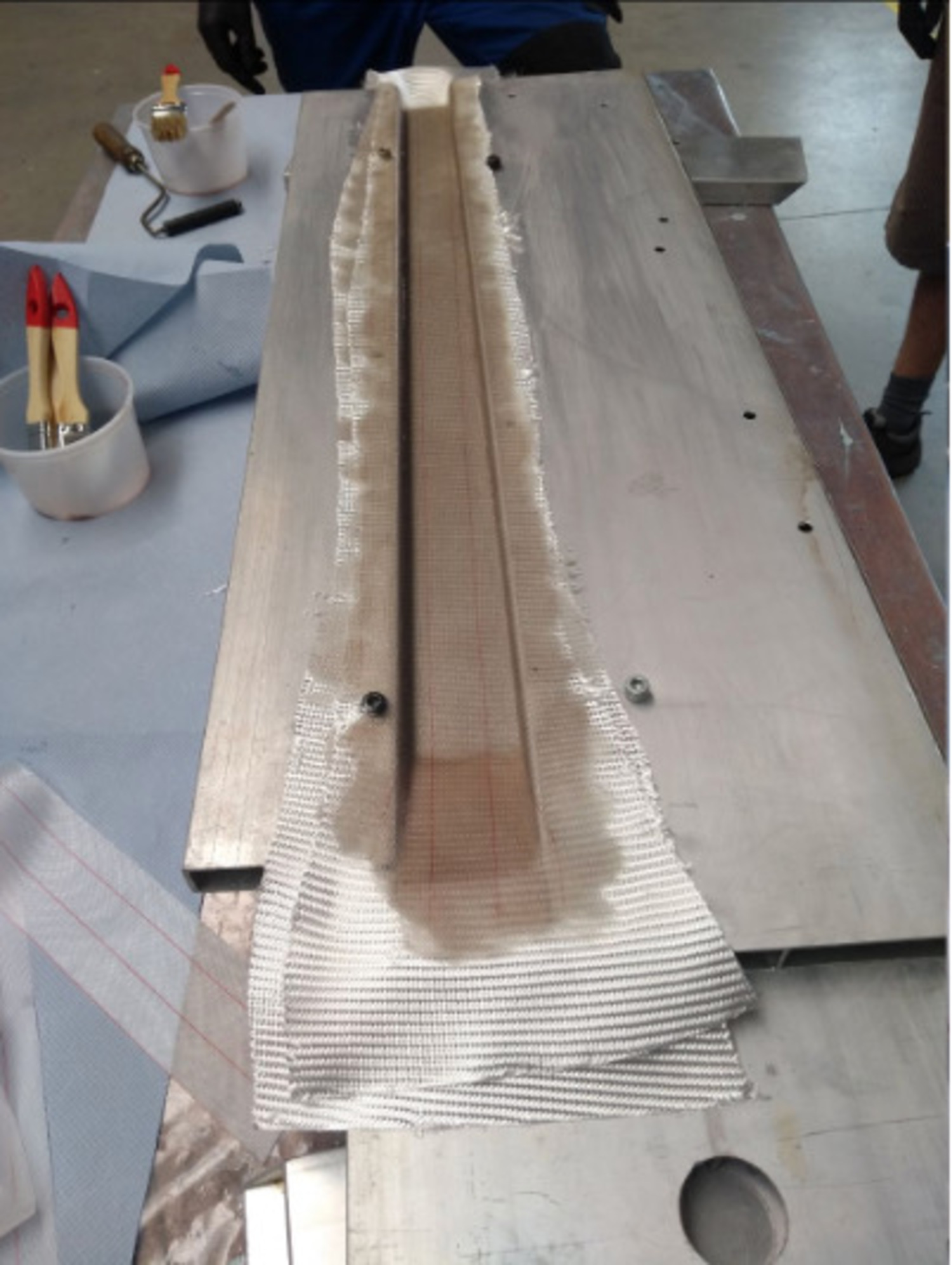
Bonding of two C-bars to form a double T-bar
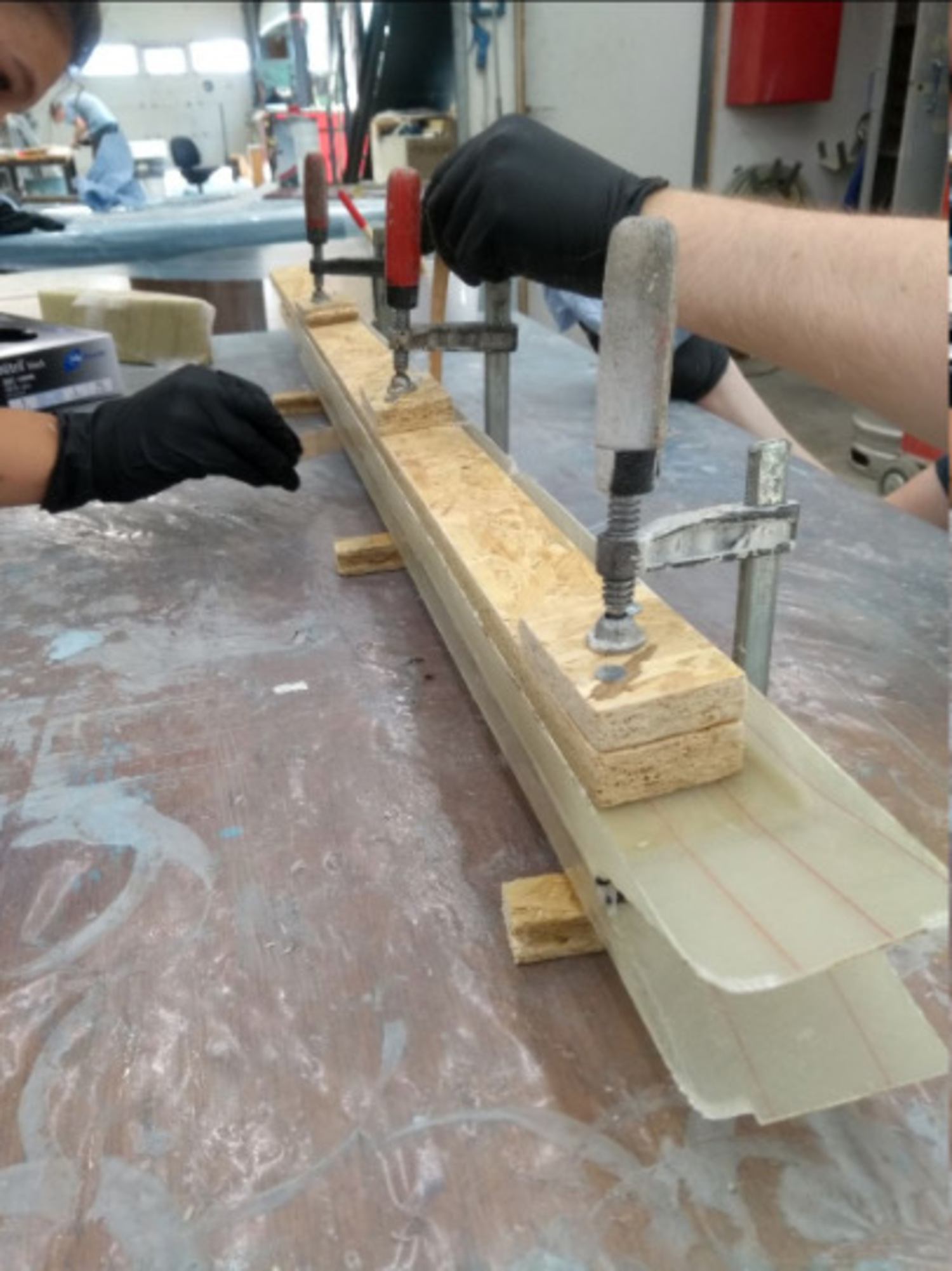
Laminated lower shell under vacuum suction
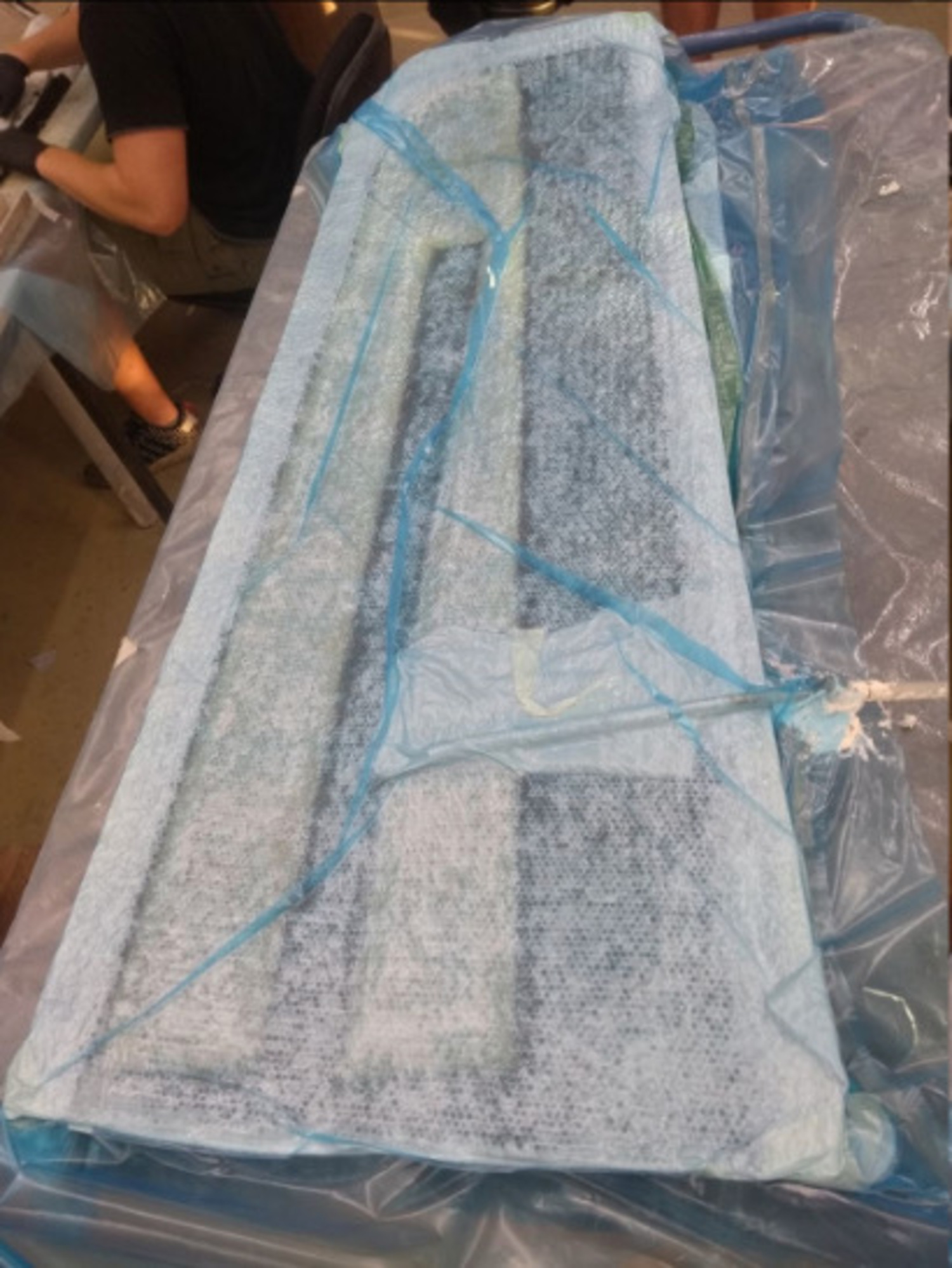
Wing, still in mold
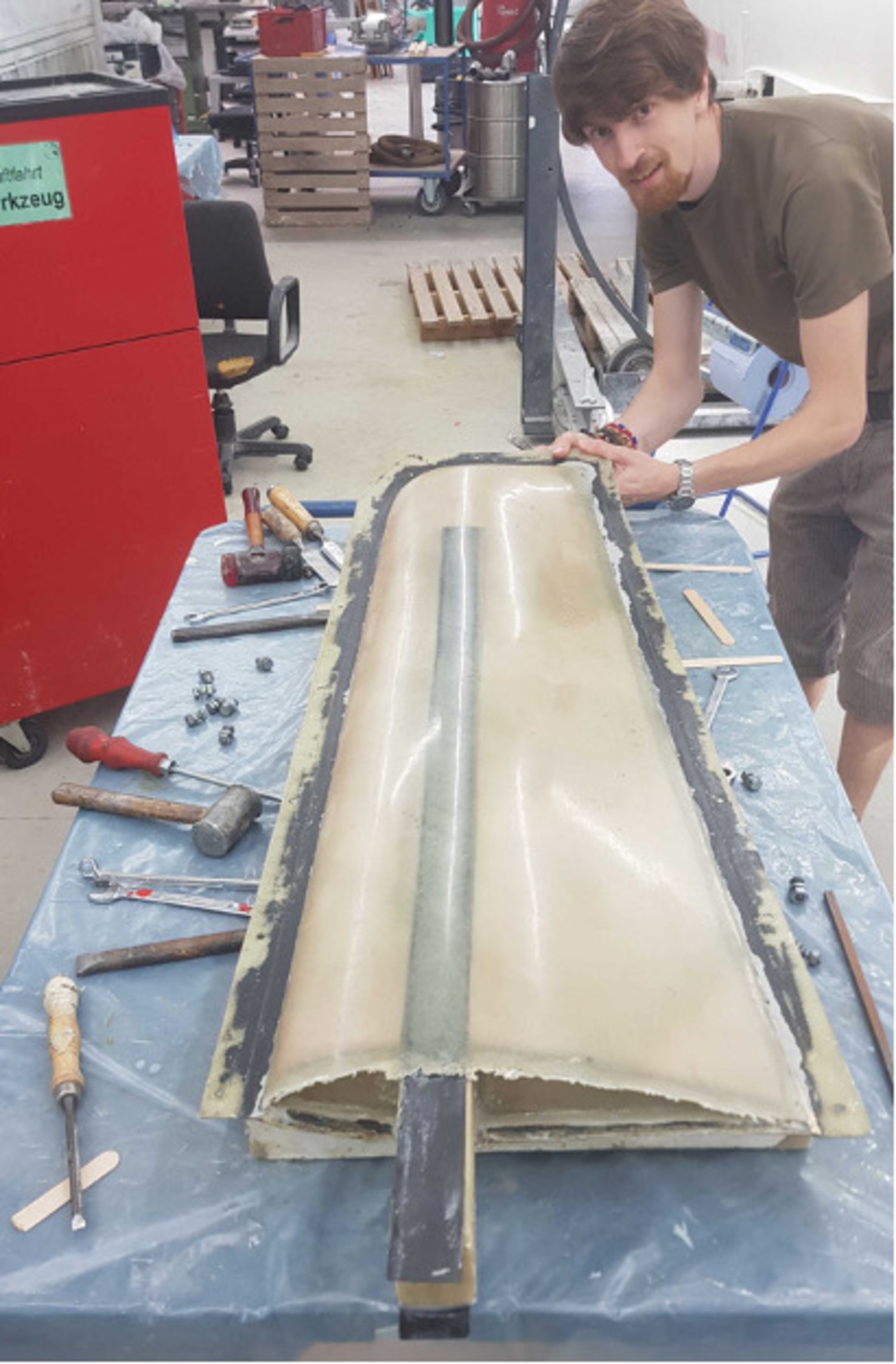
Laminating a shell with visible foam under fabric
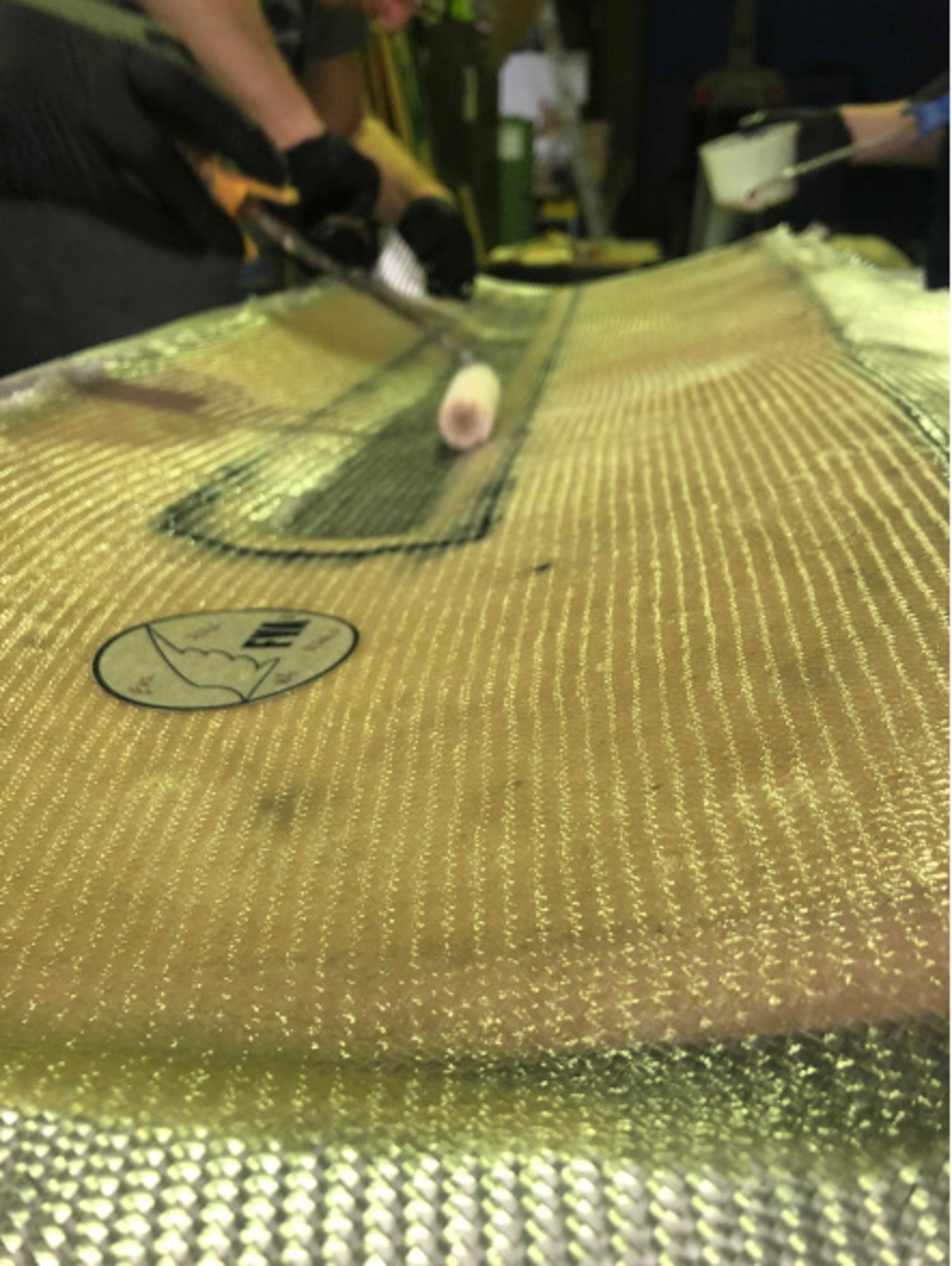
Top shell mold
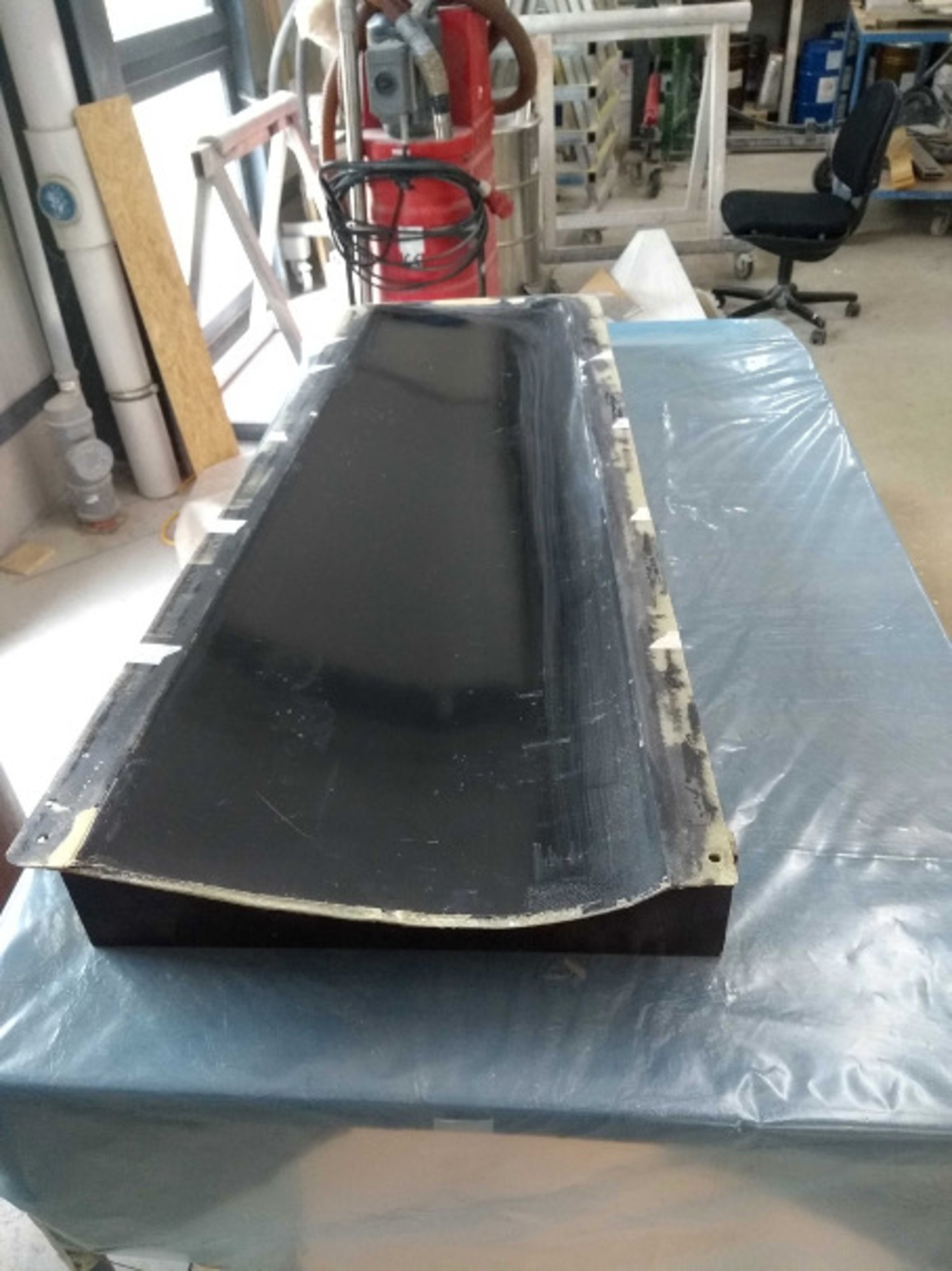
Testingof our “roving traction machine”
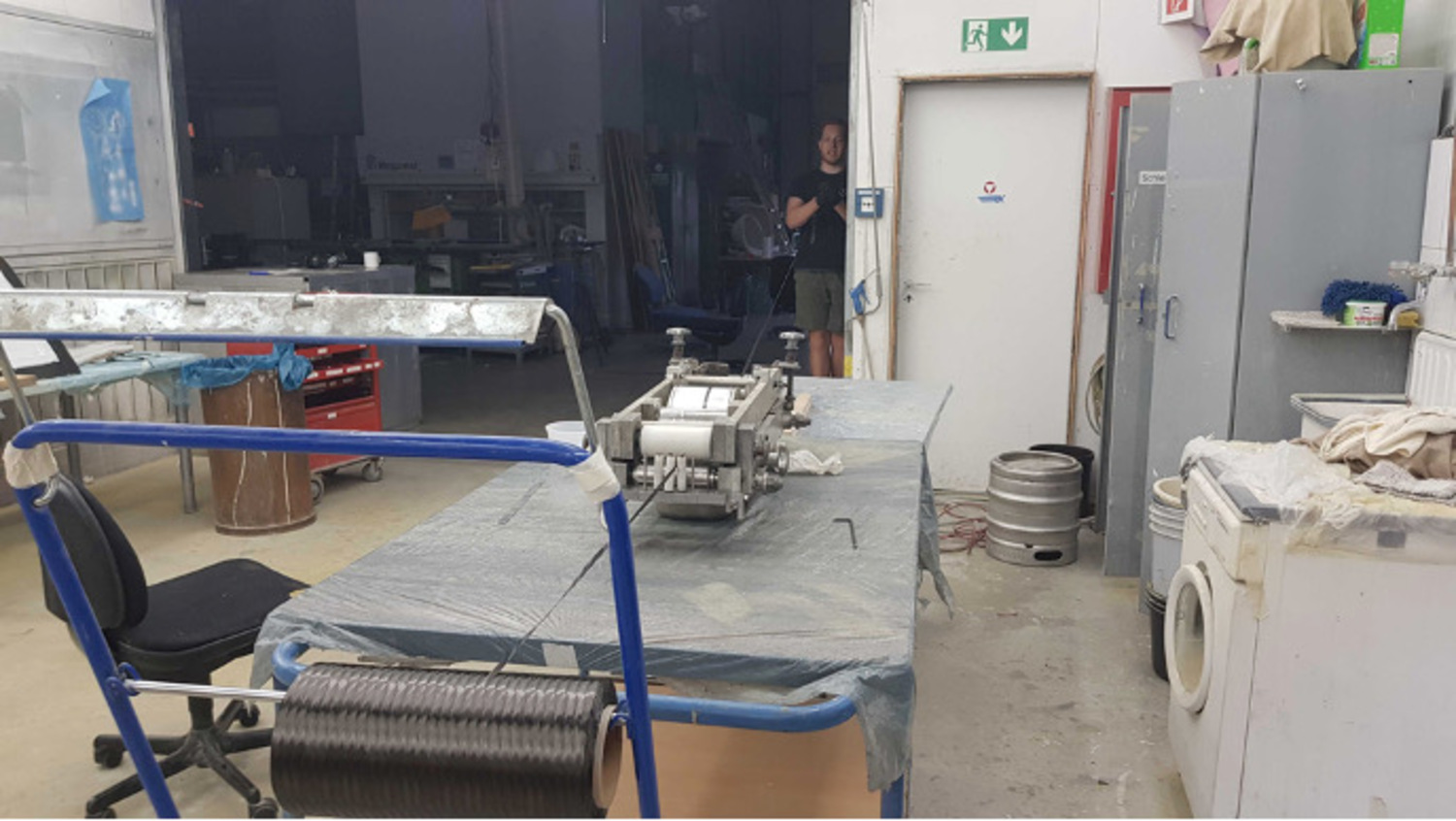
End of the demolded belt from rovings
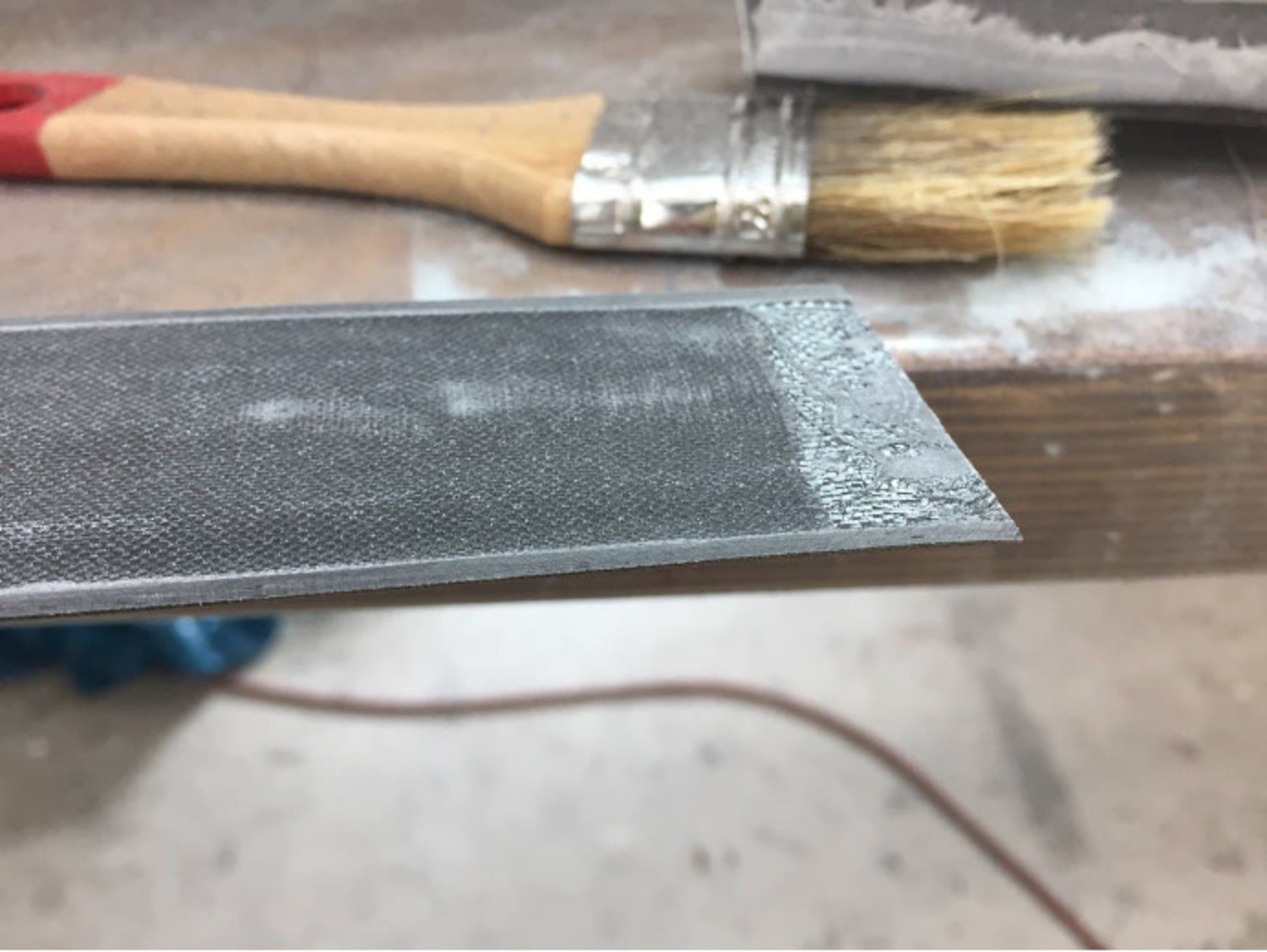
Wing during fracture test with approx. 350kg load
